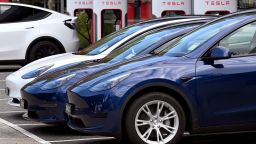After a series of price cuts throughout most of this year, Tesla is raising the prices of its two upper-end models: the Model S and the Model X.
The decision is a reversal of its strategy that was confirmed just this week by CEO Elon Musk during a conference call with investors. That call followed a disappointing first quarter earnings report, in which the company’s profit margin came up short of forecasts due in large part to lower prices.
“We’ve taken a view that pushing for higher volumes and a larger fleet is the right choice here, versus a lower volume and higher margins,” Musk told investors.
Tesla’s Model S sedan now is priced at between $87,500 and $107,500, before options, while the Model X SUV costs between $97,500 and $107,500. Those prices are about $2,200 more for the base models and about $2,700 more for the upper end “Plaid” models, according to Reuters. But those figures are still between 10% and 17% less than their prices at the end of last year before the price cuts.
Tesla had cut prices on its vehicles six times this year, including price cuts on the Model 3 sedan and Model Y hatchback earlier this week. It is seeing greater competition for EV buyers from some of the established automakers. Some competitors, including Ford (F), have responded with lower prices of their own.
Some analysts see Tesla’s price cuts as a way of taking aim at rivals who are struggling to make money on their EV offerings as they ramp up production. But it has raised concerns about its profit margins going forward, and that led to Tesla share prices dropping nearly 10% on Thursday following its first quarter earnings report.
Shares of Tesla (TSLA) rebounded more than 1% on the price rise news Friday.
The two high end models are almost an afterthought for Tesla’s overall output. It has concentrated on the lower-priced models, the Model 3 and Model Y – which Musk told investors is now the best selling non-pickup vehicle in the US market of any kind, electric or gas powered, as well as the best selling vehicle in Europe.
The Model S and Model X only made up 5% of Tesla’s global sales last year, and only half that share of its first quarter sales. During the pandemic, when computer chips and other parts were in short supply, Tesla even temporarily paused production of the Model S and X to concentrate on making as many Model 3s and Model Ys as possible.






















